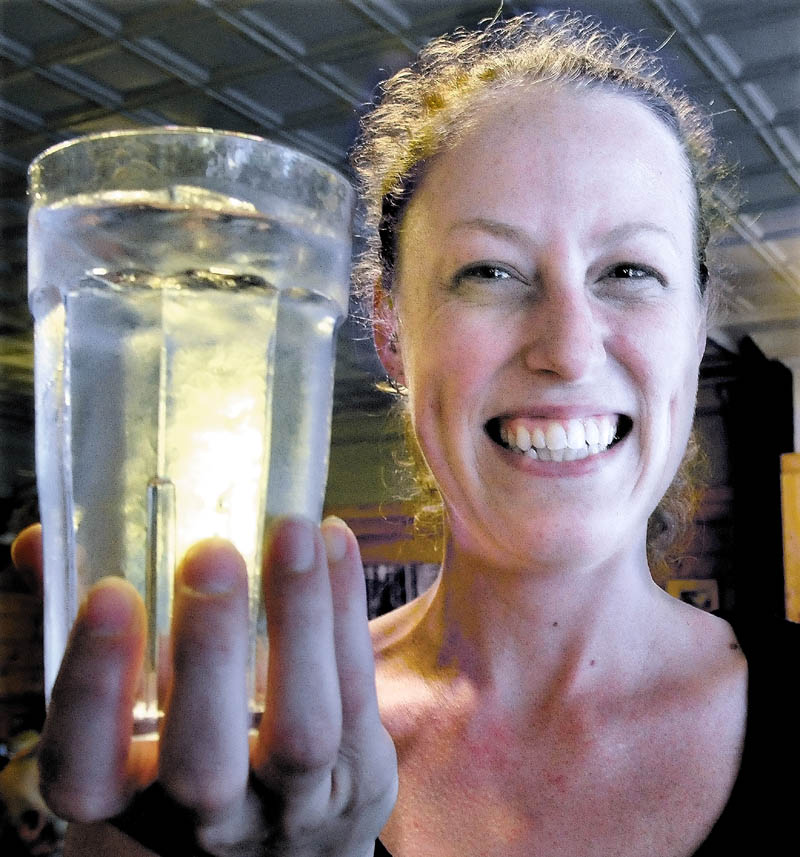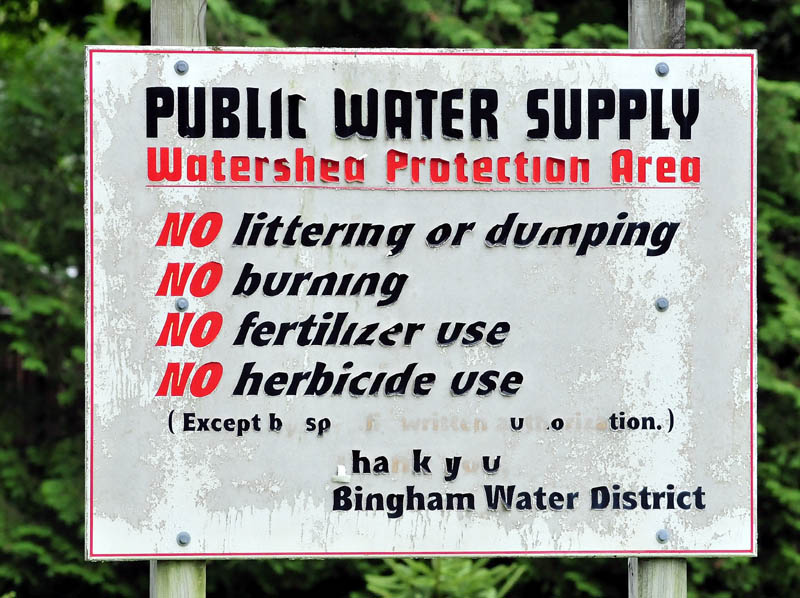BINGHAM — Pam Miller, a manager at Thompson’s Restaurant, said her customers not only enjoy the taste of the food but also the taste of the water.
As a Bingham resident, Miller, 48, said she’d have to agree.
“It’s better than any other town I’ve been in,” she said.
Bingham is one of nine municipal water districts in Maine that does not treat its drinking water — something increasingly rare in a state where almost all municipal water systems are required by the Safe Drinking Water Act to chlorinate or otherwise treat the water.
First Selectmen Steve Steward said the town has never had a need to treat its water; residents from around the greater area love the taste and the water district has never had a problem with contamination.
That may change for a couple months. The town will have to add chlorine to its water for the first time in 100 years as it replaces the town’s aging water mains.
Selectmen plan to notify residents because, well, they’re going to notice the taste.
For three years in a row, from 2002 to 2004, Bingham won the Maine Rural Water Association’s yearly drinking water taste test for non-disinfected systems — an unusually long winning streak, according to the association’s deputy director, Kirsten Hebert.
During the winning streak, Steward contacted Nestle Waters North America Inc., the parent company of Poland Spring, who showed interest in building a bottling plant in town, but never committed to a plan.
Still, Steward said it’s easy to find people from the surrounding area filling up gallons of the water in plastic jugs to cart back to their homes.
Fluoride free
Bingham’s water flows from a gravel-packed well, which taps into an underground aquifer. The district has used the well since the mid-1950s, when the district switched from Jackson Pond.
Around the same time that the water district switched to the underground aquifer, towns across the U.S. began to add fluoride to public drinking water to promote dental health. The town is also part of the 20 percent of municipal water systems who do not add fluoride in their water, according to the Maine Dental Association.
About half the population in Maine get their water from public water districts instead of private wells, and about 80 percent of public water districts choose to add fluoride, according to John Bastey, Maine Dental Association Director of Governmental Affairs.
Bastey said in the 1950s and 1960s towns across the state debated whether to add fluoride to local drinking water, though the majority decided in favor of fluoridation as a means of preventing tooth decay.
He said towns still consider adding fluoride and about once a year a town or two, most recently Baileyville and Ft. Kent, vote on whether or not to continue using fluoride.
“Generally we win because we know the benefits of fluoride. We know it significantly decreases the amount of cavities,” he said.
The town discussed adding fluoride to their water in the 1960s, but the majority of the residents voted to not add to the water, said Jack Lord, Bingham Water District board chairman.
“The people in town raised Cain and so they backed away,” he said.
Treatment regulations
Hebert, of the Maine Rural Water Association, said all surface water systems are required to treat their water. Ground water systems, such as the one in Bingham, need to routinely prove they meet state drinking water regulations through tests and water samples. The water has to be free from detectable levels of dangerous bacteria, arsenic or other volatile organic compounds.
“If a system fails one of those tests, they may be forced to chlorinate,” she said.
Most water systems have ground water systems, though the bigger population bases tend to have surface water, too.
Hebert said Maine municipalities began to switch to treated water systems as development increased and consequently sources of contamination increased.
“As a society, we’ve realized that things we never used to think about might be harmful to ingest. Science has continued to become more specific about what the hazards are,” she said.
The Safe Drinking Water Act was passed by Congress in 1974 to protect public health by regulating the nation’s public drinking water supply. The law was amended and strengthened in 1986 and again 1996, but Bingham’s water continued to meet the myriad of standards from source to tap.
Hebert said at the association’s annual drinking water taste contest, they have a slim number of participants in the untreated category with around 20 entries from municipal water districts and small businesses like campgrounds.
“It’s rare to really have a gravel well and truly be able to just drink water directly out of the ground,” she said.
Construction
The town probably will need to briefly chlorinate its water for the first time, Lord said, because of construction work to replace the 100-year-old water mains in town.
Lord said construction on the $1 million update is expected to begin near the end of August and take four months. He said the water district may need to chlorinate the water for up to two months of the construction period for safety reasons because the new pipes may contain contaminates.
He said the water district plans to send out a notice with the next bill to alert residents about the temporary change.
“Even if we forgot to tell them, they would pick up on the taste,” he said.
The average cost of water per household in Bingham is $55 per quarter for about 12,000 gallons of water, Lord said. In Waterville, the minimum quarterly water bill is $61.36 for use of up to 300 cubic feet of water or about 2,200 gallons.
Lord said while people may think of water as taste-neutral, people can pick up on additives, especially by comparison with water like Bingham.
For instance, Lord said when he was in the Southwest United States, where there is more alkaline in the water, he could taste a difference.
“For the most part water should be taste neutral, but it doesn’t always happen that way,” he said.
Kaitlin Schroeder — 861-9252
kschroeder@mainetoday.com
Send questions/comments to the editors.




Comments are no longer available on this story